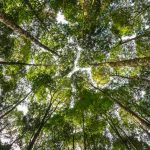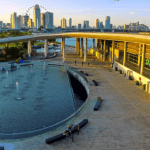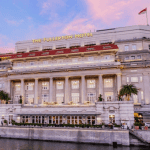Fort Canning Park is a historic landmark located in the heart of Singapore. The park is revered for its rich history, cultural significance and lush greenery. From the early colonial days under British rule to present-day Singapore, Fort Canning Park has witnessed multiple transitions, making it a must-visit destination for historians, culture enthusiasts and nature lovers.
A Brief History of Fort Canning Park
The Origins of Fort Canning Hill
The area where Fort Canning Park stands now was initially a Malay settlement surrounded by lush forests, freshwater streams and animal habitats. The foothills of the area were used for agricultural purposes, while the top of the hill was designated for religious and spiritual practices. The locals referred to the area as “Bukit Larangan” or “Forbidden Hill” due to the myths and legends surrounding the hill.
According to legend, the hill was believed to be the site where the last king of ancient Singapore, Sri Tri Buana, was buried. The hill was also believed to be the location of the palace of the Malay kings of Singapore, which was destroyed by the Portuguese in the 16th century.
The British Colonial Era
The British arrived in Singapore in 1819 and immediately recognized the strategic importance of Fort Canning Hill due to its elevated location. In 1822, they decided to build a fort on top of the hill to protect the new colony from potential invasions by other colonial powers. The fortification was initially named Fort Fullerton after the first Governor of the Straits Settlements, Robert Fullerton.
During the Second World War, the Japanese invaded Singapore, and the British used the fort as a command centre. The infamous decision to surrender was made in the underground bunker, now known as The Battle Box, located at the base of the hill. The Battle Box has since been restored and turned into a museum, providing visitors with an immersive experience of the events that took place during the war.
After the war, the fort was used as a military headquarters and a training centre for the Singapore Armed Forces. It was eventually decommissioned in 1963.
Post-Colonial Developments
After Singapore gained independence in 1965, the fort was decommissioned and eventually turned into a heritage park. In 1972, Fort Canning Park was officially opened to the public, showcasing the various historical and cultural contributions that the area provided Singapore with throughout its history. The park has been a popular venue for various events such as outdoor concerts, theatre productions, and art installations.
Today, Fort Canning Park is a popular destination for both locals and tourists alike. The park features various attractions such as the Fort Canning Arts Centre, the Spice Garden, and the Jubilee Park. Visitors can also explore the various historical landmarks and artefacts scattered throughout the park, such as the Fort Gate, the Sally Port, and the Gothic Gates.
Fort Canning Park is not just a place of historical significance, but also a place of natural beauty. The park is home to various flora and fauna, with over 80 species of birds and 60 species of butterflies recorded in the park. Visitors can take a leisurely stroll along the many trails and paths in the park, or simply relax and enjoy the serene surroundings.
Notable Landmarks and Monuments of Fort Canning Park

Fort Canning Gate
Fort Canning Gate is a historic landmark that has stood the test of time. This gate was built in 1843 as the entrance to the fort and was later restored and relocated to its current location, overlooking the Singapore River. The gate is a beautiful example of colonial architecture and is a must-visit for history enthusiasts.
As you walk through the gate, you can almost feel the weight of history surrounding you. The gate has seen many significant events in Singapore’s history, including the arrival of the British in 1819 and the Japanese occupation during World War II. Today, the gate stands as a testament to Singapore’s rich cultural heritage.
The Battle Box
The Battle Box is a fascinating underground command centre that played a crucial role during World War II. This site provides a unique insight into Singapore’s darkest hour as visitors learn about the complex decision-making processes that ultimately led to the surrender of Singapore.
As you descend into the depths of the Battle Box, you can almost feel the tension in the air. The site has been preserved to look exactly as it did during the war, complete with maps, telephones, and other equipment used by the commanders. It’s a sobering reminder of the sacrifices made by the people of Singapore during the war.
Raffles House
Raffles House is a beautifully restored colonial house that was once the home of Sir Stamford Raffles, the founder of modern-day Singapore. The house now serves as a gallery showcasing rare prints, maps, and artefacts related to Raffles and Singapore’s colonial heritage.
As you walk through the house, you can almost imagine what life was like for Raffles during his time in Singapore. The house is filled with beautiful furniture, paintings, and other artefacts that give you a glimpse into Singapore’s colonial past. It’s a must-visit for anyone interested in history or architecture.
The Spice Garden
The Spice Garden is a newly renovated garden showcasing various spices, herbs, and plants commonly found in Asia. Visitors can take a guided tour and witness where some of the world’s most exotic spices are grown.
As you walk through the garden, you can smell the fragrant aromas of the different spices and herbs. The garden is a feast for the senses, with vibrant colours and textures at every turn. It’s a great place to learn about the different spices used in Asian cuisine and appreciate the natural beauty of the plants.
The Archaeological Dig Site
The Archaeological Dig Site is a recent addition to the park and offers insight into the area’s pre-colonial history. Visitors can witness the uncovering of ancient artefacts and historical remains, offering a window into Fort Canning Park’s past.
As you watch the archaeologists at work, you can’t help but feel a sense of wonder at the history that lies beneath your feet. The site is a reminder that Singapore has a rich history that goes back thousands of years, long before the arrival of the British. It’s a great place to learn about the early inhabitants of Singapore and appreciate the island’s cultural diversity.
Cultural and Artistic Significance

Fort Canning Centre
The Fort Canning Centre is located at the heart of the park and serves as a cultural and performing arts centre. Visitors can enjoy various performances, workshops, and exhibitions throughout the year.
The Green Theatre
The Green Theater is an outdoor amphitheatre located in the park that serves as a venue for live performances, outdoor movies, and other events.
Art Installations and Sculptures
The park is also home to numerous public art installations and sculptures that celebrate Singapore’s history and heritage. The most famous of these is the statue of Sir Stamford Raffles found on the Eastern slope of Fort Canning Hill.
Nature and Wildlife in Fort Canning Park

Flora and Fauna
Fort Canning Park is home to a variety of plant species and wildlife. Visitors can stroll through the lush gardens and enjoy the scenic beauty of the park.
The Tree Conservation Area
The Tree Conservation Area is a designated area within the park where visitors can learn about the importance of tree conservation and witness some of Singapore’s oldest and most iconic trees.
The Fort Canning Reservoir
The Fort Canning Reservoir is an iconic waterway in the heart of Fort Canning Park. Visitors can take a leisurely stroll along the banks of the reservoir and take in the tranquil beauty.
Conclusion
Fort Canning Park is a living testament to Singapore’s rich history, cultural and artistic significance, and natural beauty. A visit to the park offers a fascinating glimpse into Singapore’s past while basking in the natural beauty of the park’s lush greenery. Whether you are a history buff, culture enthusiast, or nature lover, Fort Canning Park has something for everyone.








